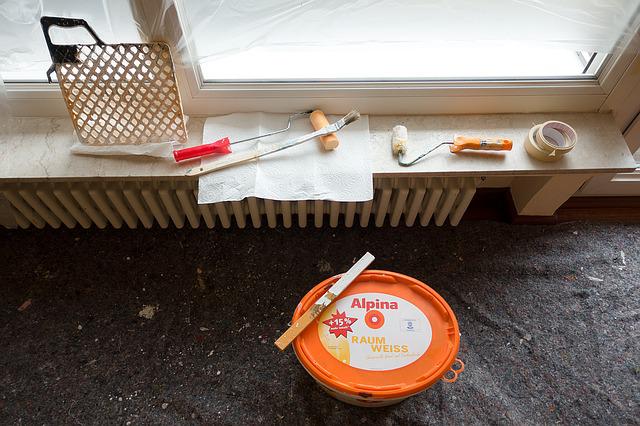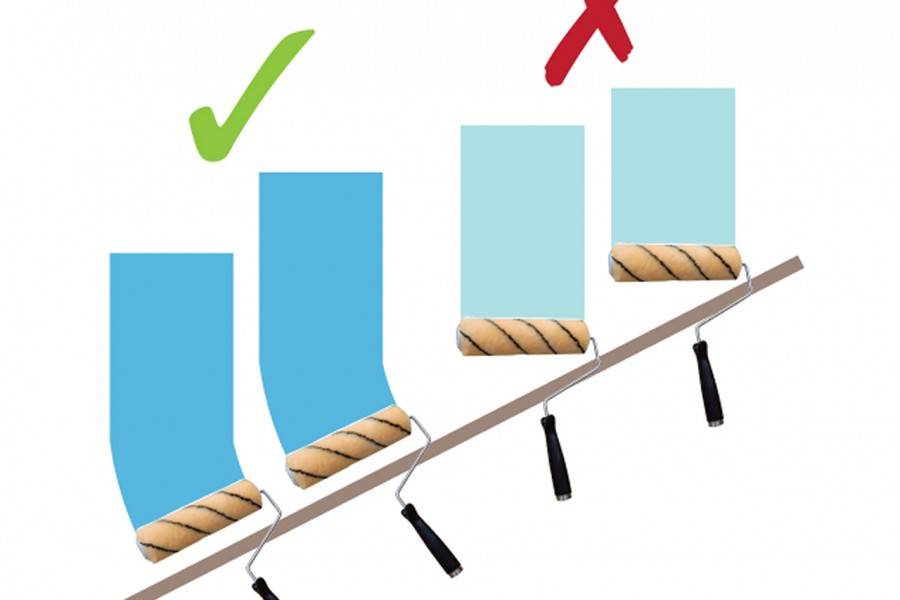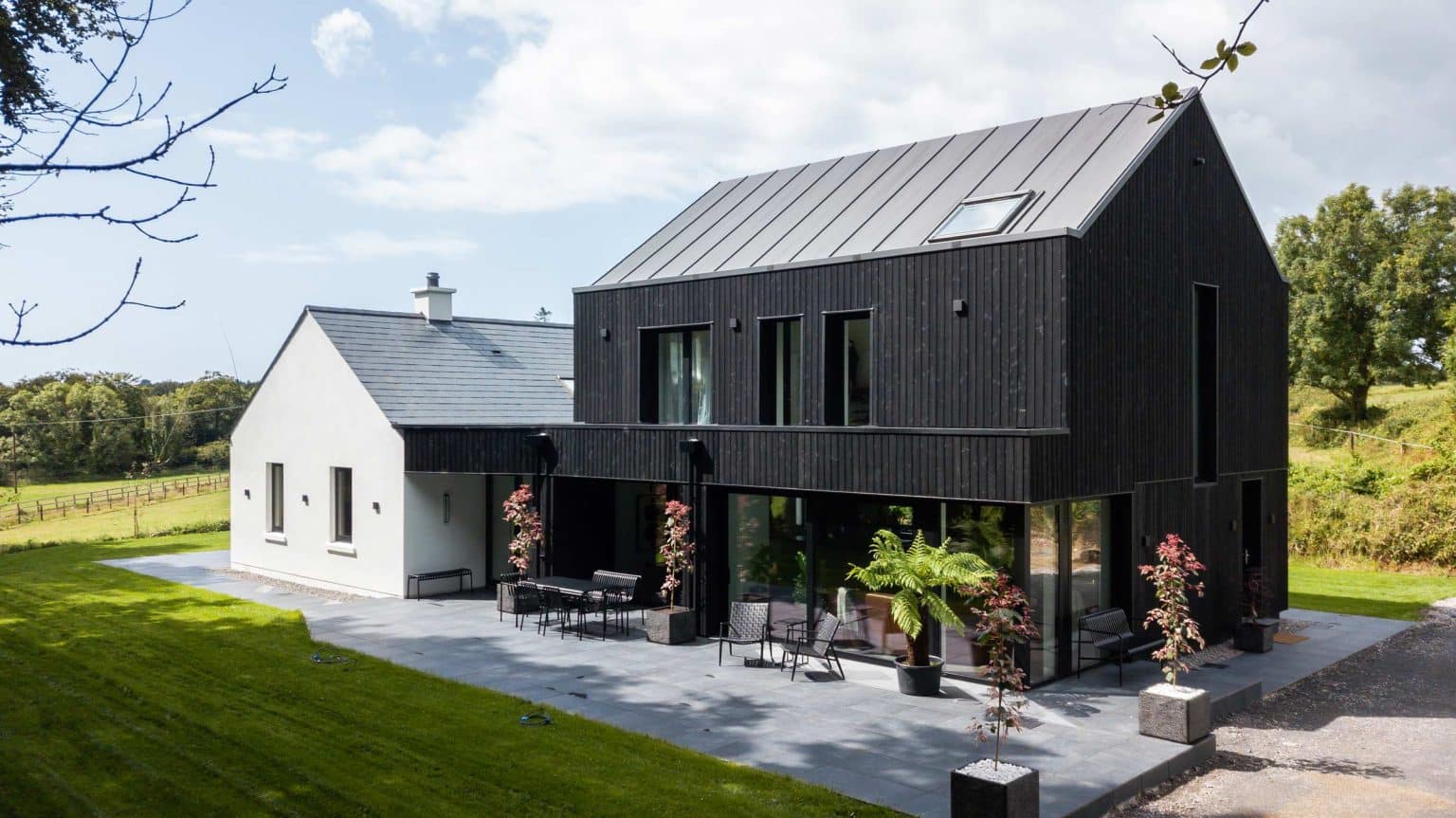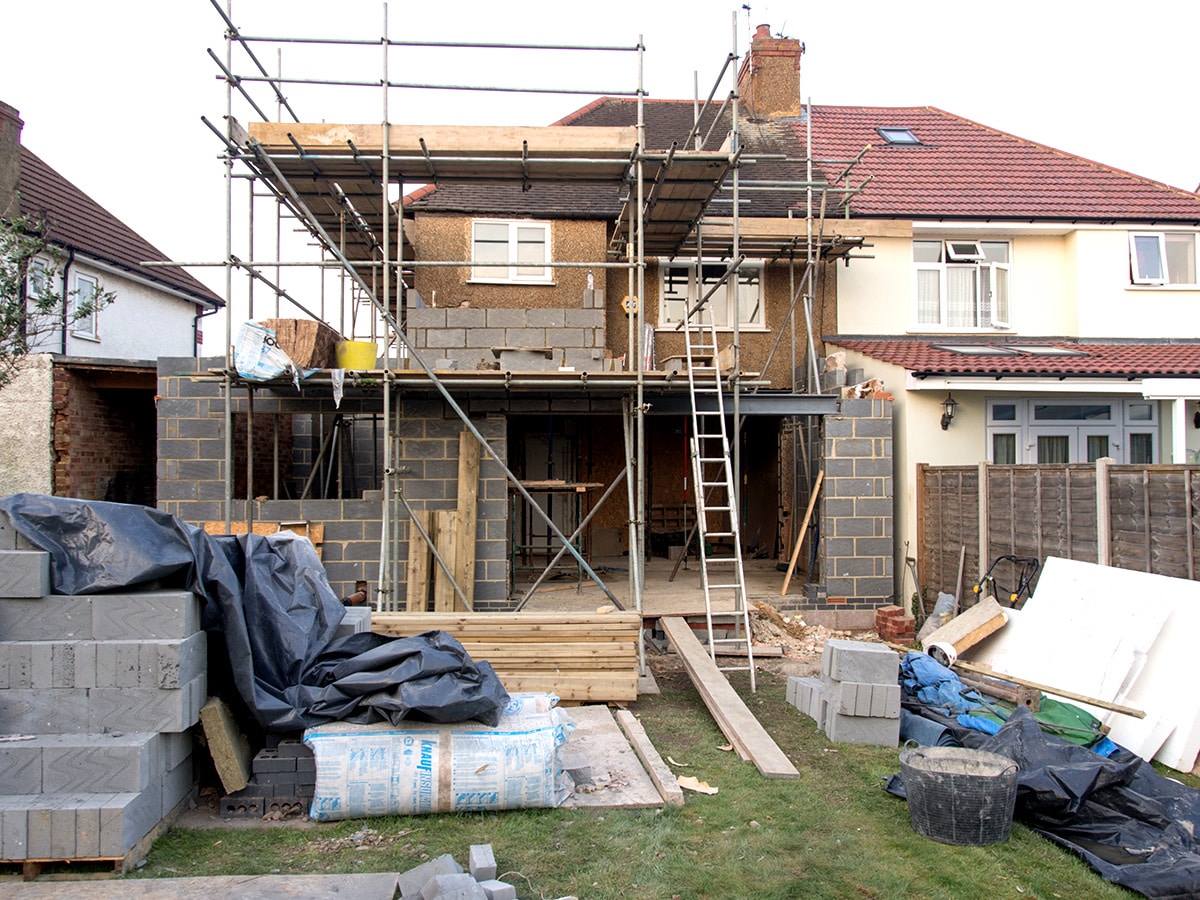DIY painting is within your reach. Here’s what you need to know to achieve a professional finish on your walls, including mastering the art of “cutting in”…
In this article, professional painter Brian Cahill shares how to:
- Paint like a professional
- Technique for painting walls and cutting in
- Tool checklist
- How to paint walls a dark colour
- How to paint plasterboard
- How to paint walls in a staircase or landing
- How to master the art of cutting in
DIY wall painting technique
Walls are one of the most visible aspects of your home and a rushed job will look it, so before you start to tackle your project, plan your approach, remove all obstacles, repair gaps/cracks/dents/holes, clean the wall and mask off anything that remains in your way.
After that it’s a question of getting the right tools and mastering the technique.

DIY painting tools
Using a roller is by far the easiest and quickest method of DIY painting a wall, but holding one in your hand for a long period of time can prove to be tiring. It also means that your strokes will be shorter, which can impair the finish.
It’s therefore a good idea to attach an extension pole to the roller and adjust to a comfortable working length. The reasoning behind it is that this will allow for longer, more even strokes, resulting in a better finish and less fatigue.
A 9” or 18” roller will not be able to apply paint right into the edge between the ceiling and the wall, so the trick is to carefully roll out the paint as close to the ceiling as you can without touching it.
If the distance you’ve left uncovered between the ceiling and wall is an inch or more, then switch to the long-handled mini-roller (radiator roller) and fill the gap, leaving no more than an inch between wall and ceiling. (If the gap is less than an inch there’s no need for the mini roller.)
Once you have covered the walls you will then need to paint the untouched area between the wall and ceiling with a brush, in a process known as “cutting-in” (see below), so it’s important that you don’t leave too much to cover.
DIY painting walls a dark colour
If DIY painting the walls a dark colour, mask off the woodwork first wherever the new paint will meet it. It saves time later. Alternatively, paint the skirting first and allow to dry.
Apply masking tape and then paint the walls with the dark colour. When dry, peel off the tape – but carefully!
Technique
- To achieve a professional finish you need a smooth surface. The first task is to remove hooks and nails, then repair any damage caused in the process. This is particularly important if you are not re-hanging pictures in the same place. A lightweight filler is best but it will need time to set before you can paint so plan ahead and do this beforehand.
- Load the roller with paint and roll backwards and forwards in the tray until the roller is evenly coated. Watch for drips as you lift the roller from the tray!
- Press the roller against the wall and slowly roll up and down using long, even strokes. Paint in a “W” pattern initially, then finish by directing your strokes from top to bottom.
- Stop the roller just short of the ceiling and continue until you feel it needs more paint. Repeat the process until the wall is completely covered. When you’ve reloaded your roller with paint don’t start where you left off – stay six to eight inches away from the last stroke and then fill the gap smoothly with a left-right motion. You’ll get a better finish!
- Walls always benefit from a second coat – you will get more depth and less blemishes will show through. So once the first coat is dry, repeat steps 2 to 4.
DIY painting new plasterboard
Many new builds and renovations leave you with a skim plaster finish that must be primed before it can be painted. It must also be completely dry before starting to apply any paint! If you try to apply emulsion paint directly from the tin it is likely to peel away with each pass of the roller.
There are several methods to counteract this, namely:
- Apply a high-adhesion primer as the first coat. They stick to almost any surface, obliterate deep colours and are quite economical. Some will provide you with a finishing coat as well. If the room has no cornice, and you are using a high-adhesion primer, prime the walls before painting the ceiling. This ensures that you have no colour mismatch around the edge of the ceiling as the primer will be a different shade of white to standard ceiling emulsion.
- Add a bonding agent to your first coat of emulsion. This separates from the paint as it dries and sticks to the surface, providing a sound base for the second coat.
- Use an emulsion paint of a suitable colour which has been diluted with clean water – usually 20 per cent. This ensures that the emulsion will thoroughly penetrate the plaster and any moisture will be allowed to escape. Several coats will need to be applied until the surface is built up to a solid finish. Then apply the finishing coat or coats but do not dilute the emulsion. Apply it as if you were painting a normal wall or ceiling.

DIY painting tips for staircases and landings
In the stair area, walls can be tricky to paint due to the height of the stairwell opening and the angled nature of the stairs. When combined, they make the task of painting the ceiling, “cutting in” and achieving a smooth finish much more difficult. But don’t worry! By planning your approach, this can be made a lot less daunting.
The first thing to do is to divide the area into three separate sections – the hall section, the stairs section and the upstairs landing section and treat each of them as separate ‘rooms’. The hall and the landing sections are just like painting a normal room, as outlined above.
The stairs section will require some additional equipment to help you tackle the angle presented by the stairs and the height of the drop from the top of the ceiling to the bottom of the stair treads. From my experience the best approach is to use a device that allows an extending ladder to be positioned sideways on the stairwell.
This in turn allows you to operate facing the appropriate wall, as opposed to facing it sideways. It also ensures that you can reach right up to the highest and most difficult section to paint. This alternative is much more convenient than scaffolding arrangements and it allows for the stairs to be used even though painting is taking place.
Many walls have an unsightly zig-zag pattern made by the roller as you look up the stairs from bottom to top. This is because the roller has been kept in an upright position and the skirting at the base is angled.
Bearing this in mind, try to keep the roller parallel to the skirting and move it upwards in a curved direction until you meet the emulsion applied vertically from above. This will eliminate the zig-zag effect and give a considerably smoother finish to the wall.

The stairwell opening is the void where the stairs ascend to the landing area. It is difficult to reach as you must usually lean over the balustrade to get to the walls. It is high, the stairs are uneven and you are going to have to “cut in” at the intersection of the walls and ceiling.
Use your roller attached to an extension-pole; this will allow for a long, smooth flow and will ensure a better finish.
Cutting in
So what’s all this about “cutting in”? It simply means painting at the dividing line between two surfaces – usually the ceiling and wall.
While the concept may be easy to understand, mastering how to do it is generally regarded as being quite tricky to do. But with practice and growing confidence there should be no reason why you cannot achieve a razor sharp definition between wall and ceiling!
You have two choices here: either use a 2” synthetic no-loss brush or, if you are not so confident, use a sash brush. The synthetic brush holds plenty of paint and lays it down over a broader area than the sash brush, but being larger you may find it a little more difficult to work with.
Technique
Dip your brush to about half its depth and load it well with paint to get a good run. Slowly apply the first coat using the ceiling line as your guide – it helps if you go as close to the line as you can on the first pass, without trying to get the finished line immediately. By doing this you will essentially lay down a reservoir of paint that can be picked up by the brush on its final finishing pass. It does require a steady hand and some confidence.
A tip that may help… take a deep breath and slowly breathe out, moving the brush as you exhale. This helps relax the muscles and allows a more even movement. Sure it’s tricky, but with a little practice you’ll find it gets easier!
Tips on cutting in corners
At the corners, i.e. where the ceiling and two walls meet, it can be quite difficult to get the finish right because you will need to neatly get the brush into the angle. This is where a little pressure, combined with gradual movement of the brush, really works. The bristles will splay out/in as you increase/ decrease the pressure you apply.
The synthetic brush in particular is ideal for this work as, with a little practice, you can almost get one filament directly into the corner! With this as your starting point you can then pull the brush across the ceiling line for a short distance to get your cutting in started. Then proceed as above.
Read Brian’s full painting guide here, exclusive to Selfbuild+




















